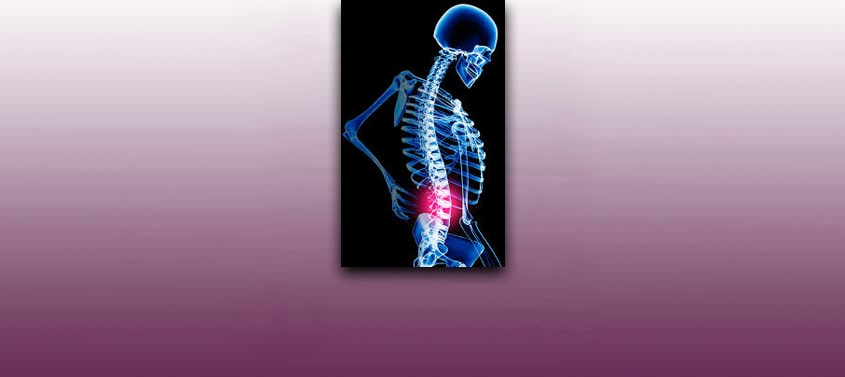
Baastrup’s Syndrome or Lumbar interspinous arthrosis
Baastrup’s Syndrome or Lumbar interspinous arthrosis
Last update: 09/03/2023, Dr. Miguel B. Royo Salvador, Medical Board number 10389. Neurosurgeon y Neurologist.
Definition
Baastrup’s syndrome or disease, also known as lumbar interspinous arthrosis, consists of a degenerative process related to the development of a pseudoarticulation between the spinous processes and the appearance of osteoarthritic phenomena. The condition is defined as a peculiar variety of axial osteoarthritis.
It occurs when contiguous spinous processes come close together and rub against each other, resulting in a mechanical overload and changes in the bony surface. In most cases, it occurs between lumbar vertebrae three, four, and five.
Symptoms
Baastrup’s syndrome is a little-known, but not uncommon cause of low back pain. There are two possible explanations for the onset of pain related to Baastrup’s disease: irritation of adjacent cortices and distension of the interapophyseal bursa, which can in some cases separate the affected cortices.
As a matter of fact, interspinous osteoarthritis can be accompanied by adventitial bursitis, which is an inflammation or irritation of fluid-filled sacs called bursae, which are found in certain places where friction occurs, such as muscles, tendons, or bones.
Patients often suffer from acute and repeated attacks of low back pain. The symptomatology increases with the progression of the disease, becomes almost constant and occurs with every movement or strain in the lumbar region, resulting in a restriction of movements – especially flexion and extension – in this area.
Diagnosis
Radiologically, Baastrup’s syndrome is characterised by: sclerosis of the contact surfaces, flattening and hypertrophy of the spinous processes.
The above-mentioned changes in the bony surfaces can be seen on spine X-rays or other imaging techniques such as axial computed tomography (CT).
Baastrup’s disease is often associated with the presence of canal stenosis, bulging discs and anterolisthesis. For this reason, diagnosis on the basis of the clinical picture is more difficult, as the symptoms of low back pain cannot be attributed exclusively to this entity.
Causes
In the cause of Baastrup’s disease, the presence of a marked increase in lumbar lordosis seems to be of fundamental importance, whatever the causes of this condition.
The reduction in the radius of the lumbar curve formed by the vertebral bodies, caused by an increase in lordosis, brings the posterior part of the vertebrae closer together, with the spinous processes coming into contact with each other, which favours the occurrence of the process: the friction between their edges causes the appearance of the new articular surfaces with the secondary formation of the cartilage covering them, the capsule, and even the synovium.
When frequent, abrupt and repeated hyperextension movements of the lumbar spine are added, there is direct bone contact that would normally be cushioned by the spinous ligaments between the apophyses, with a predisposition to new tears, crushing and pain crises in the lower back.
Similarly, the degeneration or tearing of the interspinous ligament appears to be a key process in the development of the degenerative phenomena seen in Baastrup’s syndrome.
Risk factors
Among the risk factors for Baastrup’s disease, age seems to be the most important as the disease is more common among the elderly, regardless of gender.
As well, any other pathology that promotes the appearance of an increase in lumbar lordosis may contribute to the development of interspinous osteoarthritis.
Complications
The symptoms of Baastrup’s syndrome can be complicated by persistent low back pain as well as limitations of movement and activity, which can adversely affect the quality of life of the patient.
A fracture of the spinous processes may also complicate Baastrup’s disease in exceptional circumstances.
Treatments
In general, the following treatments may be indicated for Baastrup’s syndrome:
- The initial treatment is conservative and symptomatic, with analgesics and/or non-steroidal anti-inflammatory drugs (NSAIDs) and rehabilitation.
- Should this not produce satisfactory results, local infiltration of the interapophyseal bursa, guided by ultrasound, can be performed with very favourable results.
- A variety of surgical techniques have been employed to alleviate symptoms, but the results have been very controversial.
– According to the Filum System®:
Baastrup’s syndrome often occurs in patients suffering from Filum disease. The caudal traction produced by this disease also affects the interapophyseal vertebral joints, overloading them and promoting the development of osteoarthritic processes. In addition, in Filum Disease with or without idiopathic scoliosis, there may be an increase in lumbar lordosis causing interspinous arthrosis. For this reason, before treating the latter, we perform the Filum System® diagnostic protocol to detect possible Filum disease, which would need to be treated as a first option.
References
- Arias Fernández J, Broncano Cabrero J, Bondía Gracias JM, Aquerreta Beola JD: Manifestaciones radiológicas del síndrome de Baastrup en la edad pediátrica. Radiología 2013; 55(5): 447-450.
- Granados Menéndez M, Angeli Montesinos Fernández I: Acta Rehumatológica 29 2014 Vol. 1 No. 1:6 doi: 10.3823/1305iMedPub Journalshttp://journals.imedpub.com© de Baastrup.
- Kwong, Y., Rao, N., Latief, K. MDCT findings in Baastrup disease: Disease or normal feature of the aging spine? AJR Am J Roentgenol. 2011; 196 (5): 1156-9.
- Maes, R., Morrison, WB., Parker, L., Schweitzer, ME., Carrino, JA. Lumbar interspinous bursitis (Baastrup disease) in a symptomatic population: Prevalence on magnetic resonance imaging. Spine 2008; 33 (7): E211-215. 2.
- Mayayo Sinuésa E. Soriano Guillénb A.P. Vela Marína AC: Artrosis interespinosa (síndrome de Baastrup): presentación de un caso y diagnóstico por imagen Interspinous arthrosis
- Pinto, PS., Boutin, RD., Resnick, D. Spinous process fractures associated with Baastrup disease. Clin Imaging. 2004; 28 (3): 219-22.
- M. B. Royo-Salvador (2014), “Filum System® Guía Breve”.


















